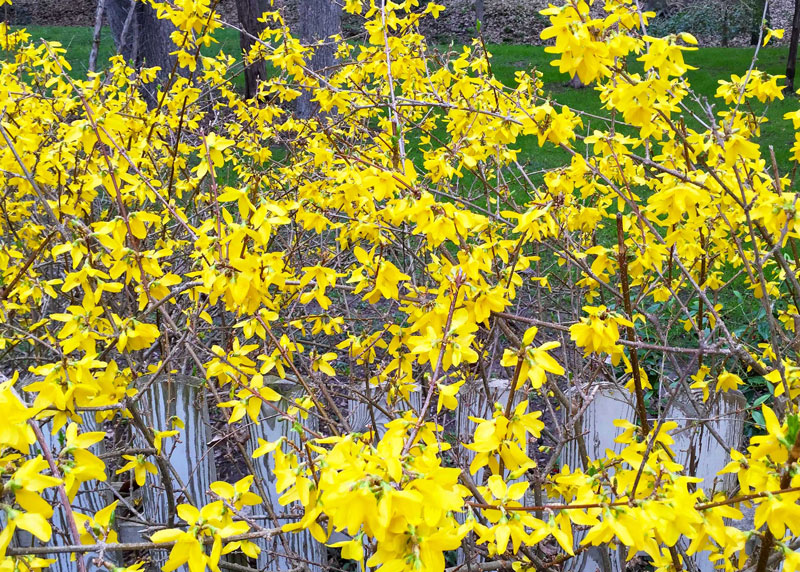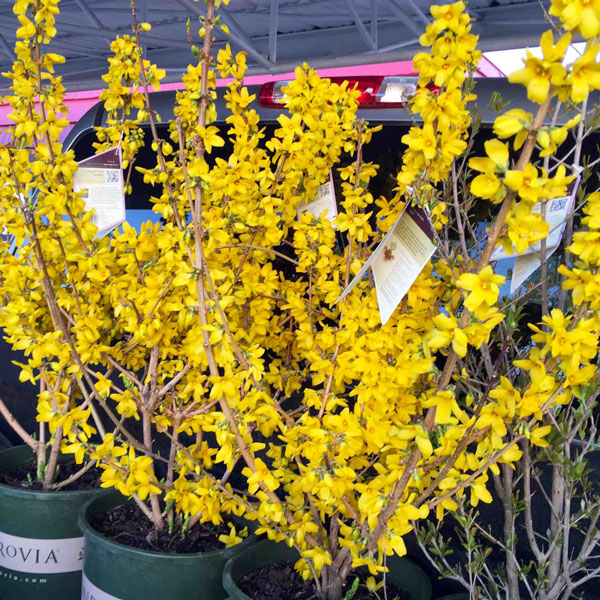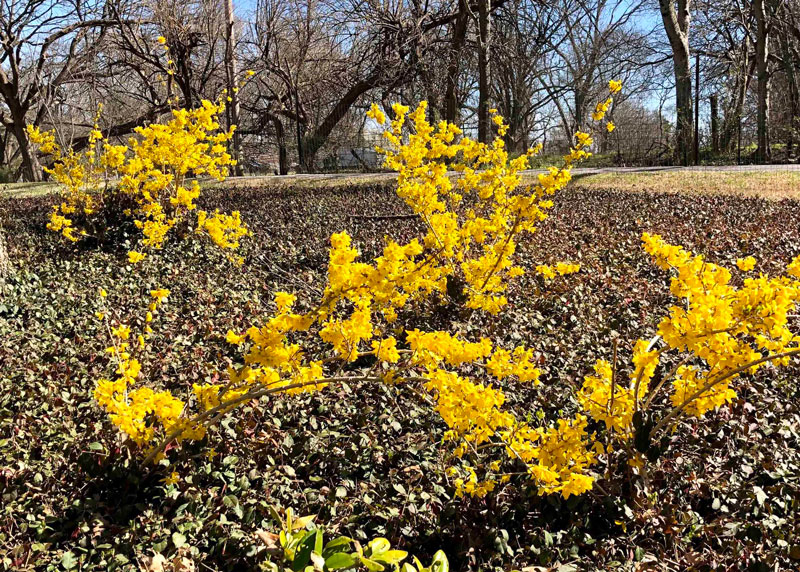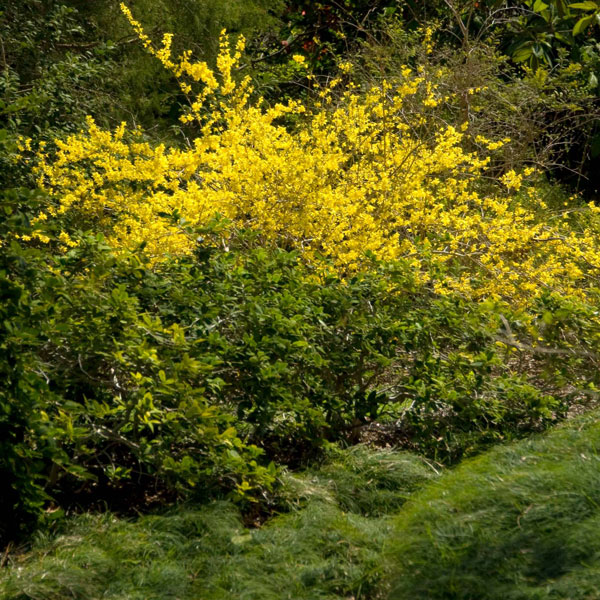Forsythias are Personal Favorites
I enjoyed my almost 7 years in Ohio very much. It was a great time to learn a lot of new plants for this kid who grew up in College Station, Texas. Suddenly I was plunged into the heartland of peonies, lilies, and lilacs, apples and rhubarb. Mom and Dad had grown up gardening in Nebraska, and they had glorious tales of the plants from their homeland.

Somehow, forsythias never got mentioned. But when my first spring in Ohio rolled in, I was so ready to see flowering plants after all those gray days and snow, that the brilliant yellow blooms that sparkled on every block let me know right away that I’d made a new friend for life.
I used forsythias in my graduate research at OSU, and when we moved back to Texas, I made sure I brought a few plants back here with me. I’ve never been without them in the ensuing 55 years.

Here are things that I’ve learned…
Scientific name: Forsythia sp.
Common name: Forsythia, golden bells
Plant family: Oleaceae
Native home: China, Japan, southeastern Europe
Hardiness Zone: USDA Zones 5-8
Best suited to these parts of Texas (in my opinion): North Texas, Northeast Texas, East Texas and Southeast Texas. Think of I-35 as a sort of dividing line. Anywhere east of that line ought to be fine, especially if it’s to the north.
Preferred soil type: Highly organic, consistently moist, slightly acidic to neutral, but will tolerate alkaline conditions.
Sun/Shade: Full sun in morning and shade mid-afternoon would be ideal. Better to have mostly sun than mostly shade.
Size: 3 to 8 ft. tall and 4 to 6 ft. wide, depending on varieties
Leaves: Medium to dark green, 1-3 in. long and 1-2 in. wide. Opposite arrangement on stems. Deciduous. Fall color is yellow, unremarkable.
Flowers: Showy in early spring before leaves emerge. Trumpet-, or bell-shaped. Golden yellow with 4-5 petals. No fragrance. Great for cutflower arrangements.

Propagation: Stem cuttings in summer (softwood or semi-hardwood cuttings) or hardwood cuttings (late winter). Can also be started by dividing offsets as branches touch the ground and form roots.
Personal observations having grown forsythias in the DFW area for 50 years: These plants are strong-growing shrubs that can be used as highlights toward the back or sides of a landscape. When they aren’t blooming, they’re only average in appearance. It’s when they pop into color in early spring that they really shine. However, they do need a constant supply of water, so don’t let them dry out. Keep them growing vigorously and you’ll be rewarded with stunning displays every spring.

